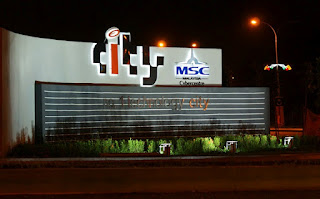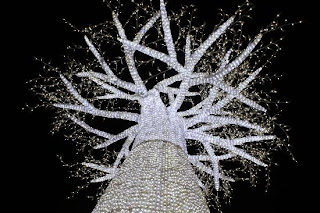The park, inspired on a unique concept, retains the surrounding ecosystem alive with nature's wonders as the main theme for recreational cum educational discoveries.
Perched 300m above sea level, Serendah International Orchid Park, nestles on the fringes of Peninsular Malaysia's main mountain range, Banjaran Titiwangsa, cradled by one of the oldest forests in the world. The park, inspired on a unique concept, retains the surrounding ecosystem alive with nature's wonders as the main theme for recreational cum educational discoveries. Throughout, undisturbed original habitats, home to an endless diversity of trees, plant, insects, bird and mammals, add to a gratifying experience.
In addition to be an agro tourism destination in state of Selangor, the Park also showcase more than 100 species of orchids and exotic hybrids, more than half a million potted plants, thousands in bloom in a riot of color.
Come experience a wonderland, host to delegates of World Orchid Conference and soon the retreat for seminar and specialized field research.
Explore interesting footpaths, jungle trails and a waterfall, watch rare birds, insects and monkeys and observe picturesque sunset from the observation deck.
It's refreshingly different, the Serendah International Orchid Park, Malaysia.
Serendah International Orchid Park, Malaysia is located approximately 40km north of Kuala Lumpur, the nation's capital city.
It is easily accessible via the North-South Expressway through the Rawang exit. Visitors travel north along the trunk road by passing the quaint little town of Rawang and Serendah and turn right, at the signboard, after the Serendah Golf Country Resort.
An alternative toll-free route using the main trunk road towards the town of Ipoh is also available.
Attractions
Attractions
Breathtaking Vistas
The Park is flanked in the east by lofty peaks covered with a rain forest canopy in a million shades of green. Watching the sunrise through the treetops, is indeed an inspirational experience. The western view, on the other hand accords mesmerizing vistas of picture-perfect sunsets over rolling hills.
Forest Flora Fauna
The surrounding forest is a treasure-trove of a myriad species of trees, mid story and understory plants. This sanctuary, among the richest and most diverse Eco-systems in the world, offers visitors rare sights of twines and creepers such as rattan, a wide variety of palms, insectivorous plants, such as the pitcher plant, native to tropical Asia and other rare finds.
The Park also teems with fauna. Almost 90 percent of the animal species are insects, and of these, most are beetles. A single tree can sometimes host more than 150 species of ants and beetles. Patient observers may catch sights of small mammals rodents and bats.
Footpaths Jungle Trails
Numerous footpaths and jungle trails with varying degree of difficulties intertwine through the park to present a gratifying experience in observing nature in its awe-inspiring magnificence.
Waterfall
Deep in the recessec of the jungle, about an hour's walk or short 4-wheel drive brings visitors to a scenic waterfall. A sight to behold perhaps to end the journey in its waters with a refreshing dip. A world of unusual experiences in oneness with nature await the ardent adventurer, families and groups.
Besides being a model agrotourism destination, visitors get to marvel at the variety of orchids-Cattleyas, dendrobiums, Vandas, Arandas, Mokaras, Phalaenopsis and even a substantial collection of wild species nurtured from surrounding habitats.
The Park, in essence, offers a total experience, an adventure in discoveries.
Bird Watching
The Park's fascinating species of birds in their natural habitat provide bird watching enthusiasts an endless reservoir of rare discoveries.
Insects, Beetles, Butterflies Caterpillars
Throughout the park, these tiny residents in various shapes, sizes and adorning an infinite coat of colors never fail to present a marvelous spectacle for the benefit of visitors.
Serendah international Orchid Park, Malaysia has dedicated 105 of its 425 acres of land for orchid growing, the development and management of a commercial orchid farm as a tourist center for locals and foreigners. The Park is divided into six exclusive zones according to the prevailing conditions of their natural habitats, namely Sun Orchids, Shaded Orchids and Shades Highland Orchids.
Future Plans
In an effort to enhance the quality of experience for visitors to the Serendah International Orchid Park, Malaysia, plans are underway for the development of exclusive chalets at strategic sites. These using all natural material, will be built within forest, retaining as much as the natural surroundings as possible for maximum appreciation of the Park's varied flora and fauna.





































